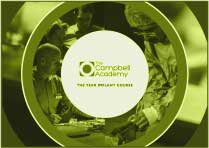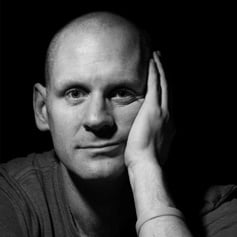.png?width=1627&height=517&name=Full%20TCA%20Logo%20(Purple).png)
Sporting analogies will always work for me as a metaphor for the rest of my life.
There not the only metaphor but I like them, as they help me understand my environment.
Its no secret that I was a big fan of Lance Armstrong in his prime when the whispers of wrong doing were only whispers and we were happy to accept that there may be rumours directed a somebody who was just super successful.
There is no question now that he is one of the greatest of fallen idols but still some of the stuff he did in order to get himself to the top of the pile was impressive and insightful (if you remove the cheating – which you can’t).
Before Armstrong won his first tour he removed himself from the system and took a team of people to train specifically for the Tour de France.
He did a team Sky before team Sky.
He trained in the Alps, he rode the climbs, he became specific.
He then became one of the first riders to target the tour specifically at the expense of all other races which recently has almost become the norm for the best riders in the world.
He did this because he believed in his methods, he hid himself away until he unleashed himself in his best possible condition on the world. He didn’t broadcast what he did on a day-by-day basis and in fact he kept it secret.
Armstrong’s world has exploded but fast forward now to Manchester City who, as I write this are unbeaten in 15 league games in a row against some pretty stiff opposition, but scratch below the surface a little bit and it becomes even more impressive.
A few days ago on December 12th Joshua Robinson wrote an article in the Wall’s Street Journal called Premier League – Man City plays Guardiola – Ball which is a fantastic insight into the statistics around the way Pep Guardiola designs his football team and design of Manchester City.
When Guardiola came to Man City many people suggested that he would not be able to play ‘his style’ of football in the premier league. For those of us who have walked around the museum at Barcelona FC the philosophy that Guardiola embodies oozes out of the walls and is written largely across most of the exhibits.
‘The team that controls position controls the game’. Basically, the article suggests Guardiola targets over 60% possession a game which provides him over 700 completed passes a game which then provides him over 7 shots on goal on average per game.
Last season Guardiola couldn’t achieve this because the stuff he did in secret behind closed doors with his players hadn’t matured. It was like the early stages of Armstrong’s training.
But what he has done and built behind closed doors is the ability to keep possession and to complete passes knowing that the players are so good that when they get a chance on goal they’re likely to score. This season Guardiola’s teams is averaging 66% possession and is completing more than 700 passes per game (18 out of the 20 premier league clubs are averaging fewer than 600). The teams average shots per goal are 7.5 per game – the best in Europe.
With this average they’re due to score 114 times in the premier league this year.
These averages are so good that they compare with some of the greatest teams of the past but in particular the Barcelona team of 2010/11 who averaged 67% possession and 7.3 shots on target.
I watched an interview with Guardiola last year (I don’t do a lot of football but I’m engaged by this story). He was devastated and upset at his teams defeat where he said he had to “go away and quietly re examine his methods”. He was in the middle of the bill process and wasn’t being given time to do what he needed to do and the pressure was enormous.
And so here is the hook…
We do this to ourselves all the time. We perform in public, we practice in public, we put ourselves forward for selection in our judgment before we’re ready when the opposite is the best way to practice.
Today I disconnected my virtual connection with Strava (that’s the app that many cyclist or runners use to show to the wider world how much training they’re doing and how impressive it is). I did this because I was comparing myself with anybody else who was coming up who I saw on my feed and being disappointed all the time that I wasn’t doing what I was supposed to do.
I was also counting the wrong things. Racing my annual mileage against other peoples annual mileage when in fact, for me annual mileage isn’t what my exercise is about.
Sometimes the urge to ‘strut like a peacock’ deflects away from the purpose of what we’re trying to achieve.
I’m off on my bike now for an unspecified period of time and an unspecified intensity with the blue skies and the wind to ride with one of my friends; it won’t be on Strava.
Blog post number: 1498





Leave a comment